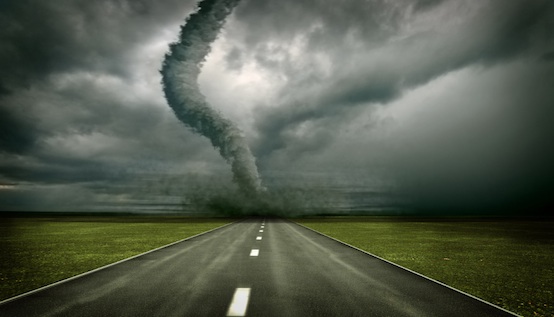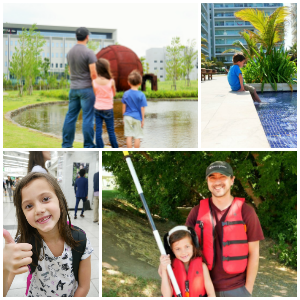
Tornadoes are volatile and sometimes unpredictable. Packing wind gusts over 200 mph in some cases, these rotating, funnel-shaped columns of air can injure people, devastate homes and property.
According to the Federal Emergency Management Agency, they have been known to leave a path of damage more than one mile wide and 50 miles long.
Also, according to the National Oceanic and Atmospheric Association, there were 1,692 tornadoes in the U.S. in 2011, with 758 of them touching down in the month of April.
A preliminary count by the NOAA indicates there were about 939 tornadoes in the U.S. in 2012.
In the Southern states, peak tornado season is March through May, while in the Northern states, the peak season is loosely defined as late spring through early summer.
But a tornado can occur in any state, during any season, and at any time–which is why it is a good idea to make sure to be prepared in case a tornado strikes.
Warning Signs of a Tornado
FEMA stresses the fact that when a tornado is in the vicinity, you can’t always depend on seeing a funnel cloud. It highlights the following warning signs as possible precursors to tornado activity:
- Large hail
- A dark, sometimes greenish sky
- Large, dark, low-lying clouds, possibly rotating
- A loud, roaring wind, sometimes described as sounding like a freight train
If you notice these warning signs, officials say you should take shelter immediately and, if possible, tune in to weather and news reports.
Where to Take Shelter During a Tornado
But where to go? FEMA suggests building a safe room, which is a reinforced room that can provide safe shelter, in your home if possible.
But, if you don’t have a safe room in your home, the Storm Prediction Center says you should either take shelter in a basement or in an interior room without windows. I
f you opt for a basement, officials say you should stay underneath a heavy table or work bench, and try to stay away from areas where heavy objects, like the refrigerator or a piano, rest on the floor above.
If you don’t have a basement, the SPC says you should go to a small interior room — like a bathroom or a closet — on the first floor and cover yourself with a mattress or thick blanket, to protect yourself from any falling debris.
In addition to making a plan to take shelter, it’s important to build an emergency kit for your home, which should include food, water and supplies for up to 72 hours.
Another important item to include in your emergency kit is a battery-powered radio, which can allow you to listen to weather reports, news updates and any emergency instructions.
Establishing a family communications plan may also be a good idea in case of an emergency, which may strike when some family members are away from home.
Ready.gov provides a worksheet that can help your family decide where to meet and whom to call in case of an emergency.
After the Tornado
Even after the twister has passed, the danger isn’t necessarily gone, so it’s important to remain cautious. Downed power lines, structural damage to buildings and scattered debris can pose a risk of injury after a tornado.
So, even when it’s safe to emerge from your hiding place, be careful. Glass and nails are potential hazards, so FEMA suggests wearing sturdy shoes or boots to protect your feet from dangerous debris.
Stay clear of any downed power lines, and don’t attempt to enter any buildings unless emergency personnel have deemed them safe.
Tornadoes can strike with little or no warning, but you’re not powerless. Take steps to make sure your family is armed with a plan to stay safe.
Thanks, Mint!







